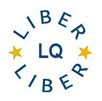Why and How to Measure the Use of Electronic Resources
DOI:
https://doi.org/10.18352/lq.7944Keywords:
information resources, use studies, library statistics, France, COUNTERAbstract
A complete overview of library activity implies a complete and reliable measurement of the use of both electronic resources and printed materials. This measurement is based on three sets of definitions: document types, use types and user types. There is a common model of definitions for printed materials, but a lot of questions and technical issues remain for electronic resources. In 2006 a French national working group studied these questions. It relied on the COUNTER standard, but found it insufficient and pointed out the need for local tools such as web markers and deep analysis of proxy logs. Within the French national consortium COUPERIN, a new working group is testing ERMS, SUSHI standards, Shibboleth authentication, along with COUNTER standards, to improve the counting of the electronic resources use. At this stage this counting is insufficient and its improvement will be a European challenge for the future.Downloads
Download data is not yet available.

Downloads
Published
2008-11-25
Issue
Section
Measuring use
License
Copyright (c) 2008 Jean Bernon

This work is licensed under a Creative Commons Attribution 4.0 International License.
How to Cite
Bernon, J. (2008). Why and How to Measure the Use of Electronic Resources. LIBER Quarterly: The Journal of the Association of European Research Libraries, 18(3-4), 459-463. https://doi.org/10.18352/lq.7944





